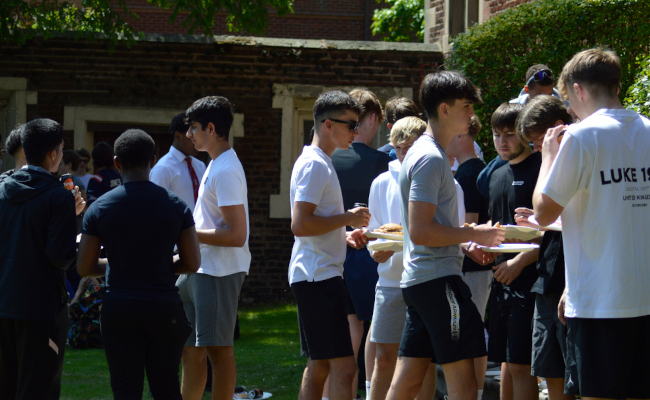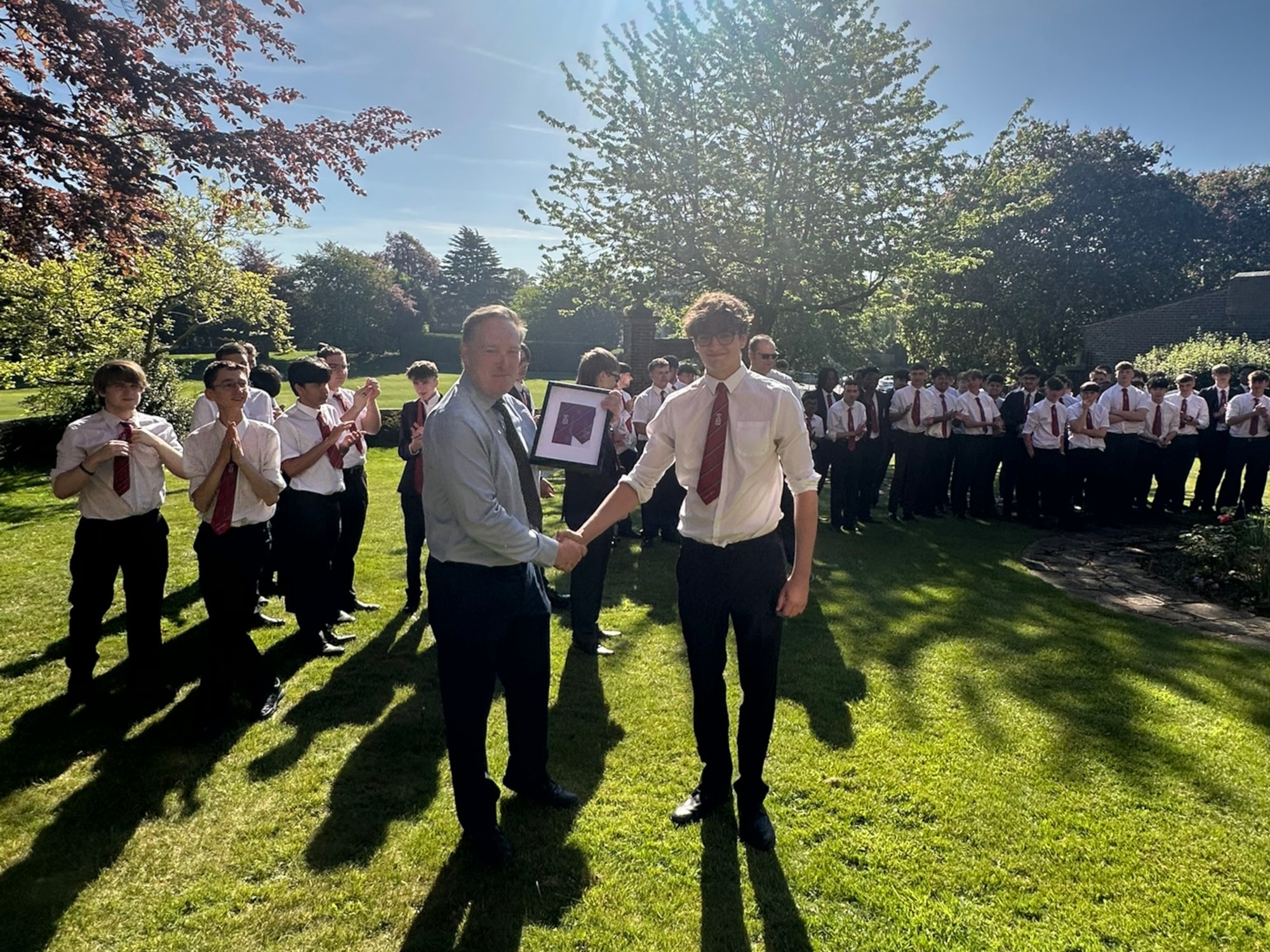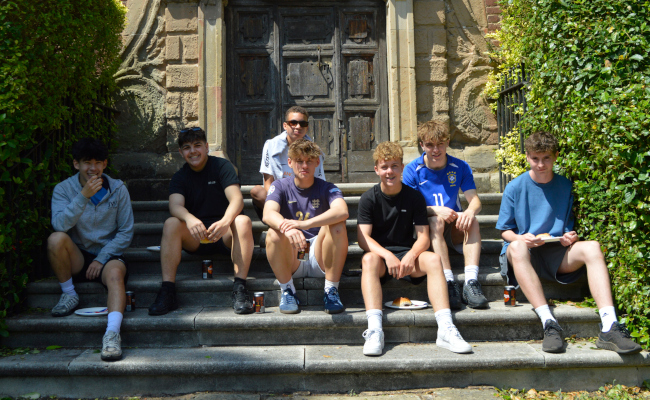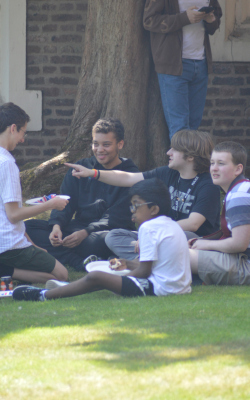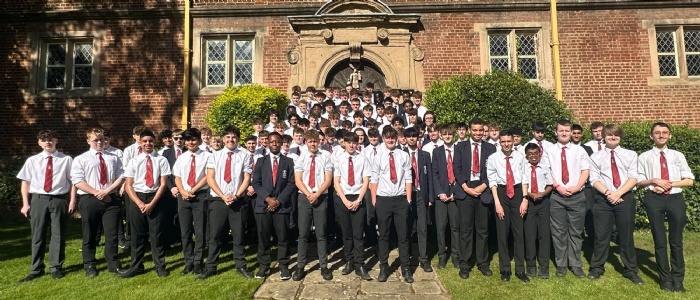
It is with no small degree of pride, and with much fondness, that we close the last page of the final chapter of all-boys education at OSH, and that story is 358 years in the writing.
From the Headmaster’s Prize Giving address:
Our Year 11 cohort today, the last all-boys year group, started life at OSH pretty much in lockdown during those disrupted years at the beginning of the 2020s. And they have emerged as a fine body of young men.
The journey of the OSH schoolboy, Thomas Foley’s original ‘object of real charity’ does not end this year, of course, it simply moves into pastures new. Yet 358 years of single-sex schooling is a long time. It’s quite an innings. I would like to mark it with you.
The OSH schoolboy has far more substance and depth than we might get from Shakespeare’s ‘creeping and whining’ apparition that he describes in the Seven Ages of Man ‘with his shining morning face, creeping like a snail unwillingly to school’. On the other hand, the resolute English schoolboy is an archetype that I would associate with OSH. Its most recent incarnation can be found in Hogwarts, but maybe we need to go to Rugby School to find its first mention in our literature.
The aura of the plucky English schoolboy was conjured, pre-Hogwarts, by a man named Thomas Hughes. Born in 1822, Hughes was sent to boarding school at age 8, which was about the age many children would be when they first came to OSH – and he was mentored by a high-minded moralistic headmaster who left his imprint on the child. ‘Tom Brown's Schooldays’ was his bestselling book. The young Tom, after a bad experience at a private school, joins Rugby, a public school, and becomes friends with Harry East. Both boys then join forces to stand up to the school bully, Flashman. The headmaster, wanting to harness Tom’s high spirits, charges him with looking after a frail new boy, Arthur. Tom does this with success.
We do tend to look back fondly on the days of our youth and perhaps that is why most of these schoolboy stories are so idyllic, but they still reference the fact that schoolboy life can be tough. Historically, life for the OSH schoolboy was most certainly tough.
Our school register shows that the first eight schoolboys arrived in June 1667. By the end of August there were 27 boys at OSH and by the end of that year, 38. 60 boys were here by 1670, in accordance with the wishes of the Founder. These were the deserving poor, not in receipt of poor relief but just about getting by without it.
For these first OSH schoolboys, life was hard, but often better than the alternative at home. Stern masters, bringing them up in the ‘feare of God’ taught them their catechism, to read, to write and to cast accounts. This basic education was related to the work they would do when they left at 14. Their blue stockings and suits marked them as apprentices. Their diet of bread and milk, cheese, mutton and beef generally sustained them. Baked rice pudding was added to the menu in 1837. Chocolate spread arrived once rationing ended in the 1950s. Wake-up was at 6am and bed at 8pm. Prayers twice a day. Discipline was harsh.
Over the centuries, we see moments when the boys would sometimes push back against the masters. I think this is important. For me, this is evidence of the OSH schoolboy knowing his own mind. And having attended countless Old Foleyans’ Associations meetings and events; met former pupils on the Hong Kong metro or outside of the Royal Society of Arts in London; at Twickenham and in Whitehall, and having seen them at work and play here now for over ten years, I can say with confidence that the OSH schoolboy is a creature who certainly knows his own mind.
We can apply this characteristic to our current Year 11 cohort.
Our Year 11 boys, when requested by our Parents’ Association to select a gift to mark the end of their year at OSH, chose not a day trip to a theme park, a pizza evening or a hoodie, but a tie. Designed by Harry and Jacob, it symbolises the boys’ affection for and attachment to their school. Well done boys, and I refer you to Oscar Wilde who once commented that ‘a well-tied tie is the first serious step in life,’ I can see it being worn at future reunion dinners in the Great Hall ten, twenty or more years from now. My colleagues and I proudly wear this tie today, as I did at Buckingham palaces last month. The royal garden party was for people working in schools and education, and I am confident that nobody else, not even the King, was wearing a one-off tie designed and presented by their Year 11 students who mark the end of a 358 year tradition. Amidst the gallery of ties which we have at OSH, this is surely one of the finest.
We have, in this year’s group of Year 11 boys, a tightly knit group of comrades and friends. They have bonded during their Covid isolations in Dudley House and their Teams lessons during the pandemic, they have had one another’s backs on the sports field, on Duke of Edinburgh, as cadets on camp and during adventure training. They have just emerged from that exhausting slog which is the GCSE examination marathon. I have found them, throughout all of this, to have maintained their lightness and cheerfulness – most of the time – as upbeat and can-do members of this community. I’ll not have anybody tar these boys with the brush of toxic masculinity. This is not them. They are a capable, hard-working and thoroughly decent group of young men. We are very, very proud of them.
I think they share one final characteristic that is, in my view, underrated, underestimated and largely ignored. Amidst all the raucous energy and good cheer, the humour, the bluster and the repartee, these boys are in possession of a rare gift.
Boys and young men are often chastised for being poor communicators and at times distant and withdrawn. In my experience they are excellent communicators, in their own way.
Their gift is silence. A knowing look, a discerning smile, a raised eyebrow, a nod, a scornful shake of the head is just the start, for it’s really what’s going on behind their eyes. And these can convey a host of meaning. These boys don’t need to fill silence, they are quite comfortable in it. And that, for me, is a measure of their character. Indeed, hope that that they and all of our students may find what peace there may be in silence. In this busy world, it will serve them well later in life, at work, through parenthood and beyond.
Paul Kilbride
Headmaster

